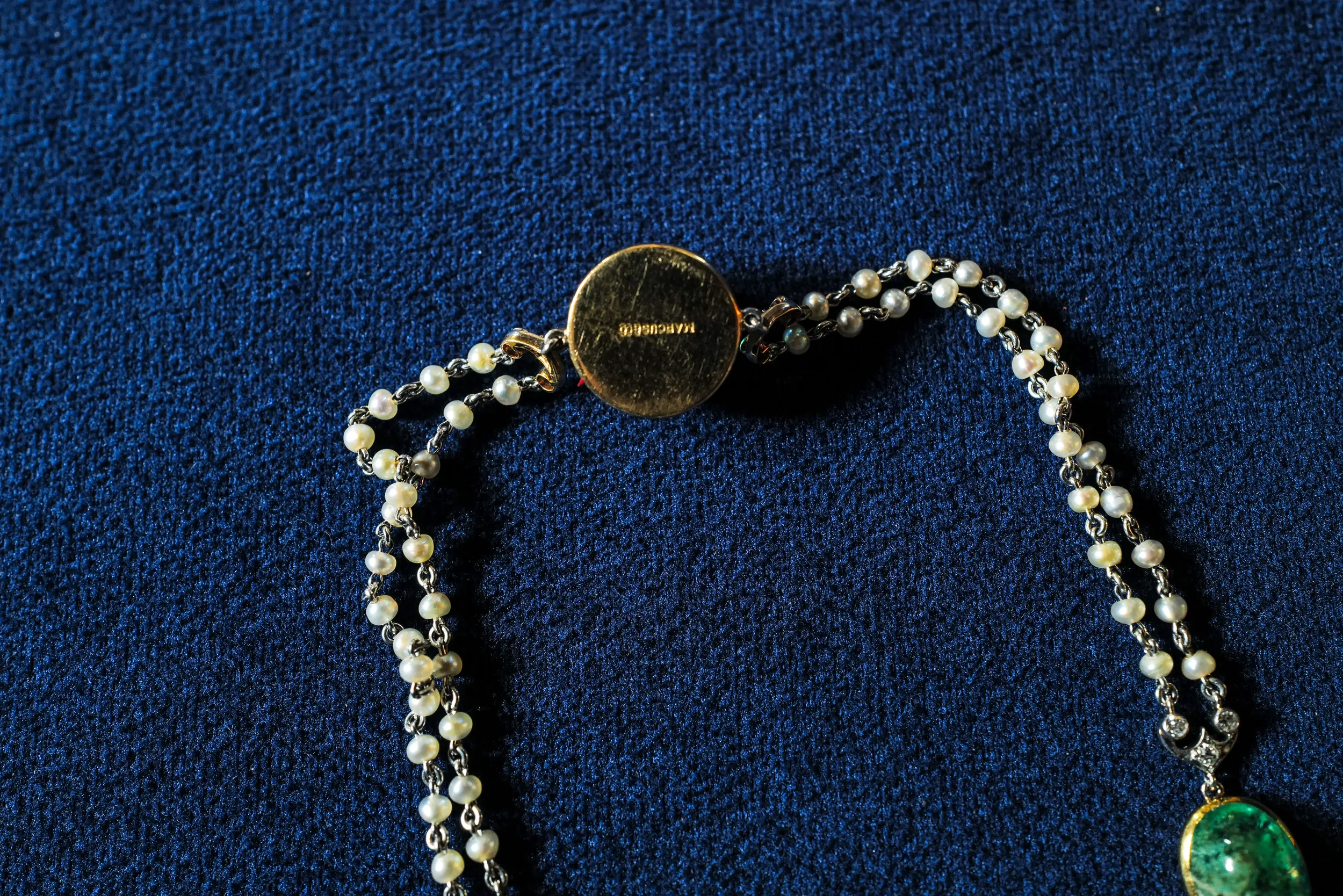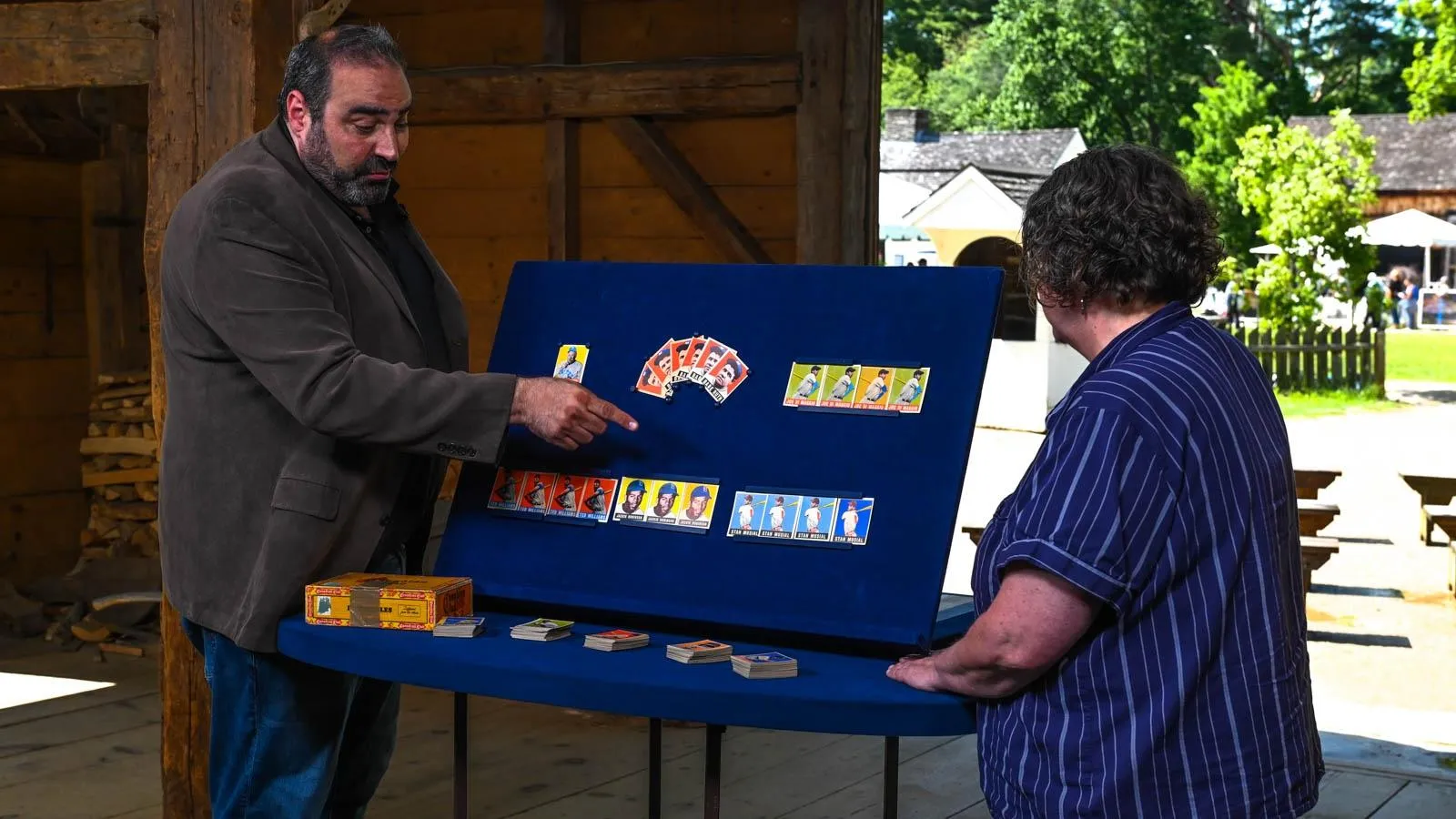GUEST: It was made by Marcus & Company in New York. I know that it has a lot of lovely cabochon emeralds mixed with tiny pearls, and a lot of small diamonds in work such as here.
APPRAISER: Mm-hmm.
GUEST: And then some bigger pearls.
APPRAISER: Okay, and, and how did you come by the piece? I mean, did it, was it a family piece or...
GUEST: Well, it passed, uh, down through my husband's family.
APPRAISER: Right. Herman Marcus, um, started his career in Dresden, and then he came over to New York in 1850, and he worked for Tiffany Company and, uh, Ball, Black, & Company. And then, a few years after that, he set up a partnership with T.B. Starr...
GUEST: Mm-hmm.
APPRAISER: ...and then he started working with his son. And then, in about 1892, he set up Marcus & Company that we know today.
GUEST: Mm-hmm.
APPRAISER: It's a, uh, pearl, diamond, and emerald sautoir. It's early, an early piece of his. It's about 1905, 1910.
GUEST: Oh.
APPRAISER: He's very, very famous for work he did a little bit later, more Art Nouveau, sort of plique-á-jour enamel pieces.
GUEST: Mm-hmm.
APPRAISER: We don't find many of his earlier pieces. The emerald beads are superb. And they're probably Colombian. Um, you know, that's very difficult to, to determine without a, a, a test. The natural pearls, the skins on them are beautiful. The luster is absolutely wonderful. You find very, very few pieces, uh, whether it be Cartier or Marcus, from this period. It's a wonderful thing to see. In a retail environment, you could easily expect to pay around $120,000 for this necklace.
GUEST: Wow. (chuckles)
APPRAISER: It's one of the best examples I've seen of, of, of his work. It's absolutely superb.
GUEST: Oh, my gosh. What did you say? A hu, how much?
APPRAISER: Around $120,000.
GUEST: (exhales): Why, I had no idea.
APPRAISER: You're very lucky, and I hope you keep it and enjoy it.
GUEST: Thank you.
APPRAISER: Really beautiful.
GUEST: I may have to start wearing it.
APPRAISER: You might, yeah. I hope so.
GUEST: (chuckles)









